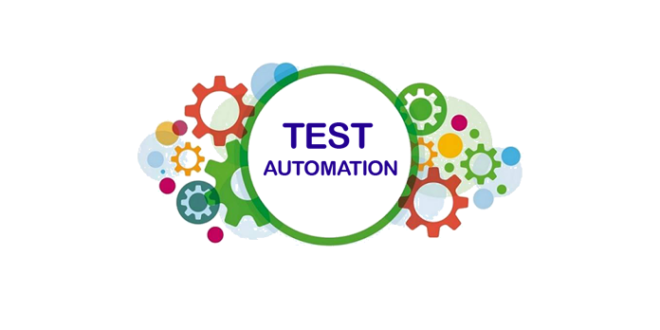From Manual to Automated Screening: A Comprehensive Overview to Transitioning Efficiently and Properly
In the world of software program screening, the change from handbook to automated processes has become an increasingly vital change for companies looking for to improve effectiveness and accuracy in their screening techniques. As modern technology remains to advancement, the need for seamless and reliable automatic testing methods has actually never ever been much more pressing. The trip from handbook to automated testing is not without its obstacles, but when come close to tactically and with a clear plan in mind, the advantages can be considerable - automation testing. In this extensive guide, we will certainly check out key actions and factors to consider vital for a successful change, from the preliminary selection of devices to the combination of automation into existing operations. Remain tuned to uncover the understandings that will help lead the method for a smoother and more efficient testing procedure.
Advantages of Automated Evaluating
Automated testing uses numerous advantages, improving efficiency and accuracy in software program development processes. One key benefit is the considerable decrease in testing time. Automated tests can be run simultaneously on several tools and operating systems, substantially speeding up the testing stage contrasted to manual testing. This boosted performance enables faster feedback on the top quality of the software application, making it possible for programmers to recognize and deal with concerns quickly.
In addition, automated screening makes certain a greater degree of precision in identifying defects. Since automated examinations adhere to predefined manuscripts, human mistake is lessened, causing even more reputable test results. Consistency in screening is additionally boosted, as automated examinations perform the same steps specifically each time they are run. This uniformity is vital in making sure that all performances of the software application are thoroughly tested, lowering the chance of unnoticed insects slipping via to manufacturing.
Selecting the Right Devices

Firstly, evaluate your objectives and requirements. Understand the extent of your task, the modern technologies entailed, and the ability collection of your group. This evaluation will certainly assist you identify the features and capabilities you need in your testing tools.
Second of all, take into consideration the compatibility of the devices with your existing procedures and systems. Smooth integration with your existing software application development lifecycle is essential to make certain a smooth shift to automation.
Furthermore, evaluate the scalability and adaptability of the tools. As your testing requires develop, the devices must be able to adjust and fit changes successfully.
Lastly, variable in the assistance and community around the devices. Robust assistance and an active customer community can give useful resources and help when applying automated testing. By thoroughly taking into consideration these elements, you can pick the right tools that straighten with your requirements and established the stage for a successful change to automated testing.
Writing Efficient Examination Scripts

When crafting test manuscripts, it is vital to consider the certain requirements of the software application being tested and make sure that the scripts attend to all critical performances. Descriptive and clear calling conventions for test scripts and examination cases can boost readability and maintainability. Additionally, including error handling systems within the examination manuscripts can help in determining and addressing problems without delay.
Additionally, arranging examination scripts into modular components can improve reusability and scalability, look at this now minimizing redundancy and enhancing effectiveness in examination manuscript maintenance. Routine testimonials and updates to test scripts are vital to maintain pace with progressing software requirements and performances. By adhering to these concepts, testers can create efficient and durable test scripts that contribute substantially to the success of automated screening procedures.
Integrating Automation Into Workflows
Efficient combination of automation devices right into existing process simplifies procedures and enhances efficiency within software program growth cycles. When incorporating automation right into operations, it is essential to determine repeated tasks that can be automated to conserve time and lower human mistake. By seamlessly integrating automated screening devices like Selenium or Appium right into the software program development lifecycle, teams can achieve faster feedback on code changes, causing quicker insect discovery and resolution. This combination permits continual screening throughout the growth procedure, making certain that any kind of concerns are recognized early on, resulting in higher software quality. Additionally, automation can be used to activate examinations instantly after each code devote, giving immediate validation and maximizing testers to concentrate on even more complex scenarios. Correct combination of automation tools requires cooperation in between development, screening, and procedures groups to develop a unified workflow that optimizes performance and efficiency in providing premium software products.
Ensuring a Smooth Shift
Successfully transitioning to automated screening entails careful preparation and cautious implementation to lessen interruptions and maximize effectiveness in the software development process - automation testing. To make certain a smooth transition, it is necessary to begin by performing a complete assessment of the existing screening procedures and identifying areas where automation can bring the most substantial benefits. Engaging with all stakeholders early on while doing so, consisting of designers, testers, and job managers, is vital for amassing assistance and buy-in for the automation effort
Interaction is key during this change phase. Clear interaction of the objectives, advantages, and assumptions of automated testing helps to manage any resistance or worries that may develop. Additionally, providing ample training and sources for team participants to upskill in automation devices and techniques is essential for making certain an effective change.

Verdict
Finally, transitioning from guidebook to automated testing offers numerous benefits, consisting of increased efficiency and dependability. By picking the proper Read More Here tools, composing efficient examination scripts, and use this link integrating automation effortlessly into process, companies can guarantee a smooth and effective change. It is necessary to embrace automation as a useful asset in software program screening processes to enhance overall top quality and performance.
In the world of software program testing, the shift from guidebook to automated procedures has actually ended up being an increasingly crucial transition for companies looking for to boost efficiency and accuracy in their screening methods. Automated examinations can be run concurrently on several tools and running systems, significantly speeding up the screening stage compared to hand-operated screening. Uniformity in screening is additionally boosted, as automated tests perform the exact same actions precisely each time they are run.To make certain the successful execution of selected testing devices, the development of efficient test scripts plays a vital duty in confirming the functionality and efficiency of automated procedures - automation testing. By complying with these principles, testers can create durable and reliable test scripts that contribute dramatically to the success of automated testing processes